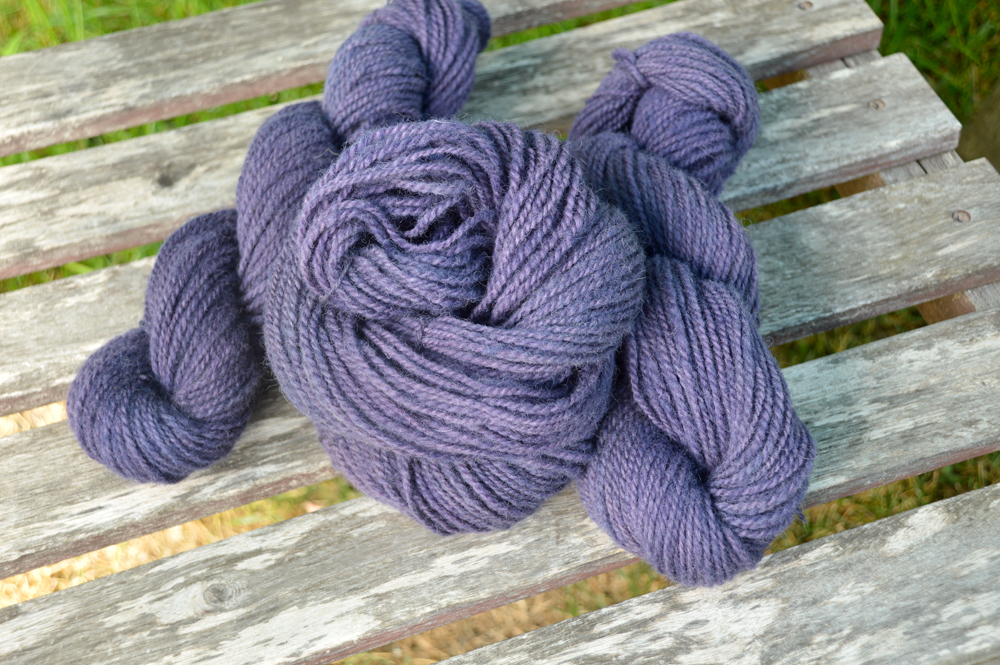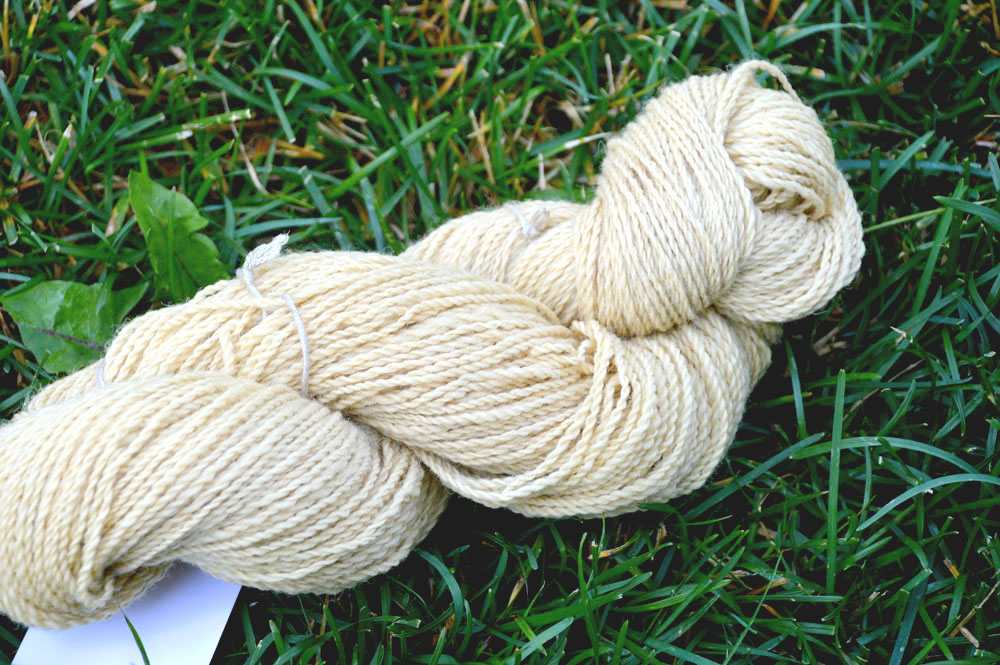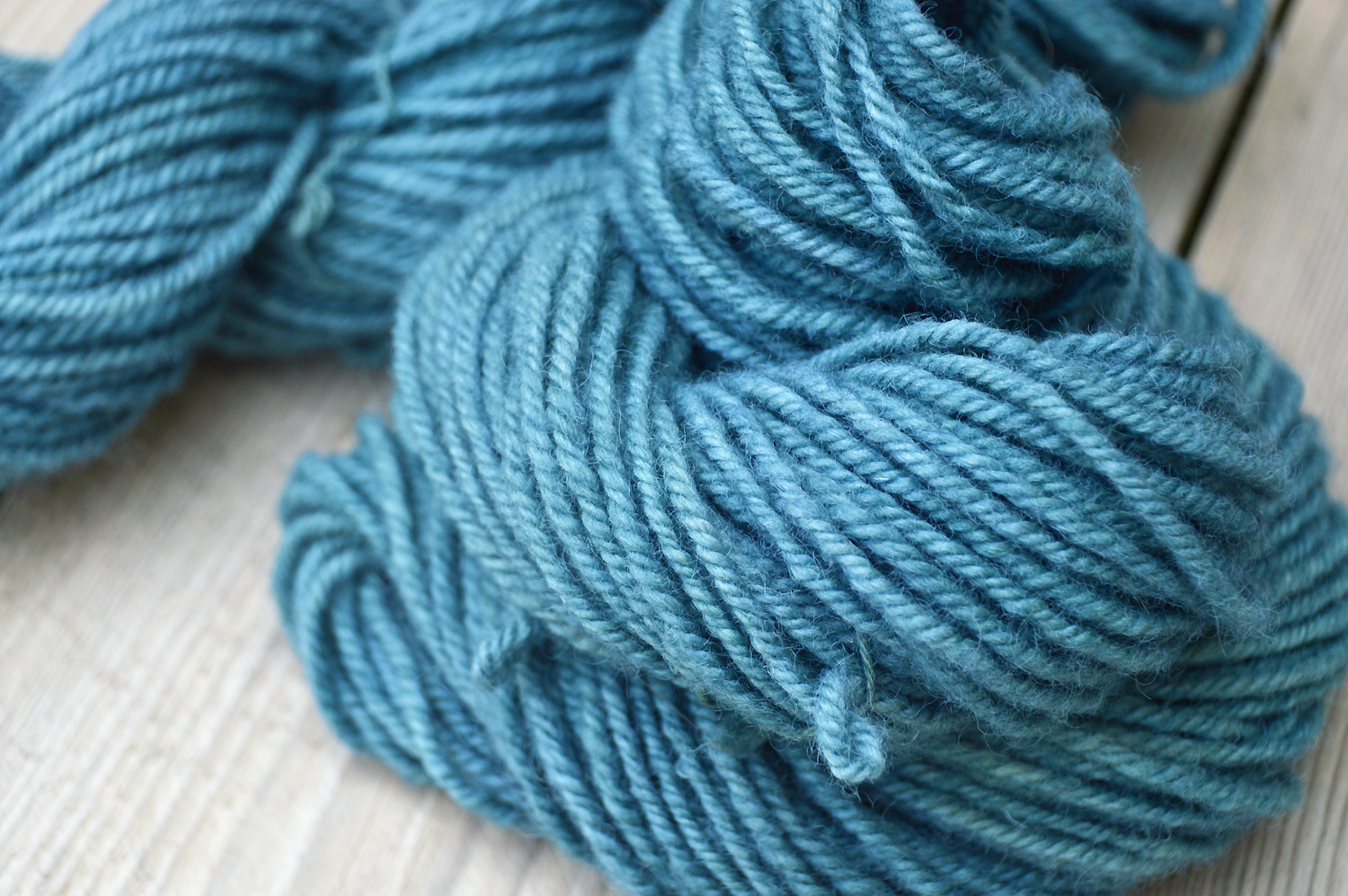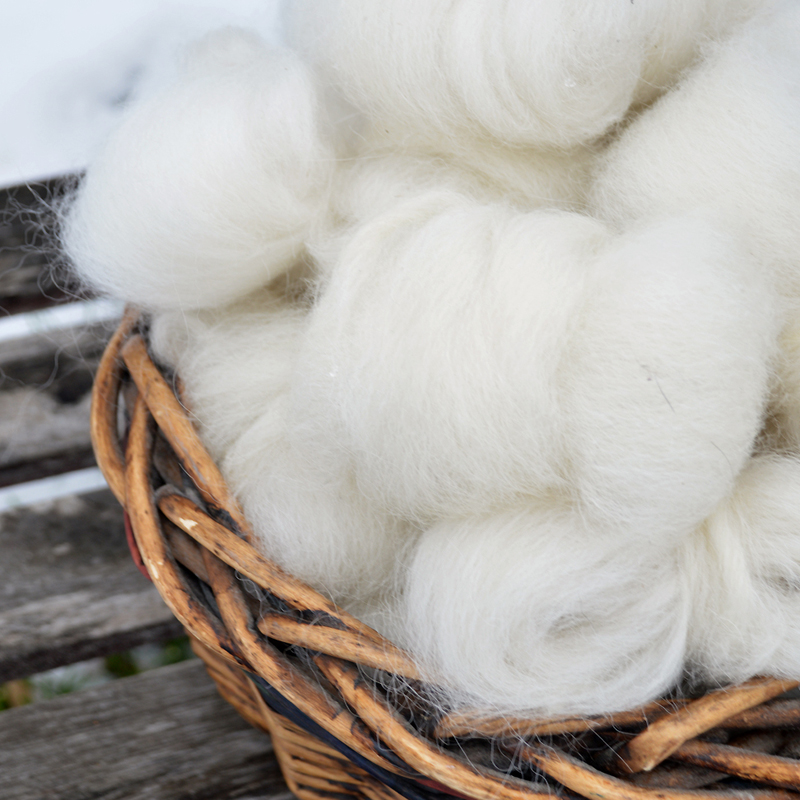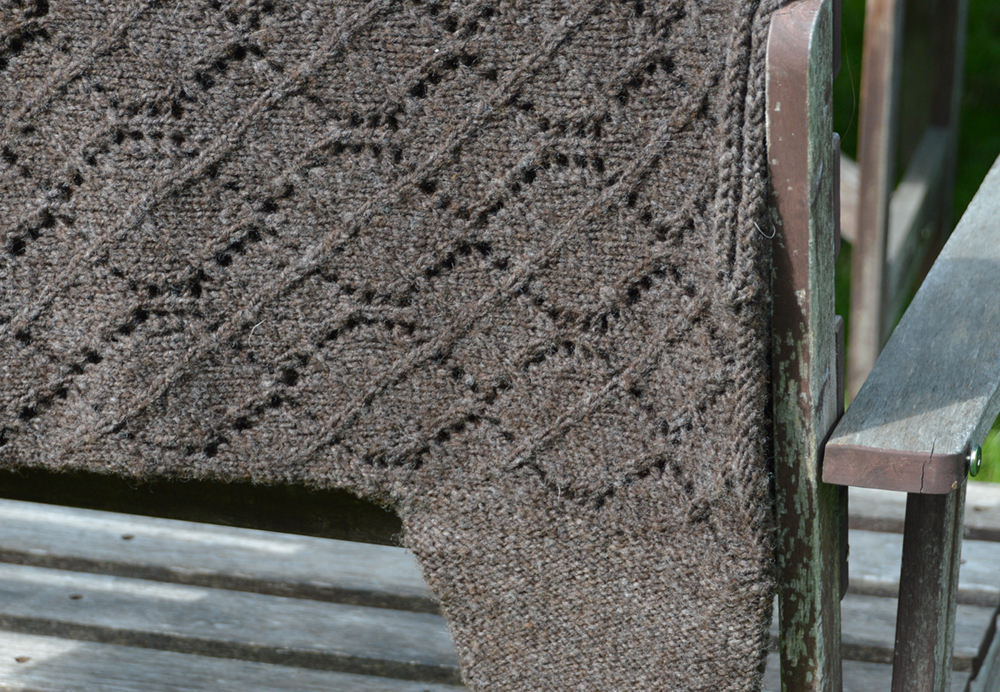When trying to decide what my first natural dye would be, I wanted something relatively simple. Or, to put it another way, something relatively straight forward that would allow me to get what I’m going for without too many variables. I’m a big fan of when learning a new skill, start really simple and work your way up to adding all the bells and whistles.
What this means for me and dyeing is starting with one ingredient to get one colour. Logwood seemed like a good choice to stick to that plan because with minimal additives, afterbaths, etc. you’re pretty much assured to get a deep rich colour.
I had actually read a few things about Logwood before I began. The first being that hard water can actually be beneficial to popping out the colour of Logwood, which is great because my city has hard water. The second was that adding a bit of osage could push the colour into the more green range (I’m forever trying to get a green, I’ll know I’ve arrived with manipulating colour when I can achieve that). So, despite all my preaching to the contrary I ended up mixing some colours and adding those variables.
But, as you can see from the photo above, the osage made little dent (if any), so I basically ended up just dyeing with the Logwood.
Recipe
248g Pre-mordanted Clun Forest 2-ply
38g Logwood (15% WOF)
8g Osage extract (3% WOF)
I used yarn I had pre-mordanted about three weeks prior. As I discussed in my previous post, pre-mordanting yarn has some anecdotal observations that the colour may set better and brighter as opposed than doing all at once in the dye pot. I’m not sure how true this is, but it fits in with my work flow to pre-mordant, then come back later and dye as the mood strikes.
The Process
I started first by weighing out my Logwood chips to 15% WOF (weight of fibre) the night before, and placing them in a bowl. I boiled some water, and dumped that over the chips, where the colour immediately began to release. The water went from clear to deep, deep purple as fast as the it hit the chips. I put in enough water to allow the chips to move and float around to allow all of that purple to seep out.
I came back the next morning, and the water had turned almost black; it was an amazing transition to see. At about the 12 hour soak mark, I set up the dye pot, filled it with water, and strained the wood chips out and set them aside to dry. The lovely thing about Logwood is that the same chips can be used to get a lighter shade in a second batch (which I will be testing out later on another yarn this summer!).
With the dye pot, water, and Logwood dye suspension, I warmed it up to about 75-80C, and when it hit that temperature I put my pre-wetted yarn in the pot. I let that all simmer for about 50 mins then pulled the yarn out and let it cool.
I had heard that Logwood just takes forever to rinse, but I found that there was very little run-off of the colour. I was quite pleasantly surprised, so 15% WOF seems to be a good ratio. As I said previously, the Osage really did little if anything at all, so in the future I’ll just forego adding that to the pot.
All I did after the rinse is squeeze out, then hang to dry in a shaded area. The richness of the purple is quite pleasing, although I’m generally not a huge fan of purple. I have about 300 yds of this Clun Forest handspun, and while the yarn is a bit thicker than what I’d normally use for a pair of socks, I think they’ll do the job nicely.
Solution vs. Suspension
I wanted to go over this idea, because it’s imperative when understanding dyeing. If you remember your 6th grade science classes, solution and suspensions are two different things. When dyeing, you are creating a suspension.
A solution is where a solvent (in this case, dyestuff) is mixed into the water and becomes a homogeneous mixture of those two. A solution you can dilute with the solute (water in this case) which would make a lower ratio of the dyestuff and therefore create a lighter shade. But this isn’t what happens in a dyebath.
A dyebath instead, is a suspension. A suspension is a heterogeneous mixture, where the solute (dyestuff) does not dissolve and mix into the solvent (water) to become a homogeneous solution. Instead the dye particles are suspended, hanging around but separate from the water. That’s why when you create a dye bath, the amount of water doesn’t matter, it’s just the vehicle to dye your yarn. Instead, the weight of fibre to your dyestuff is what matters, because those are the two properties of the dyebath interacting.
What I learned
